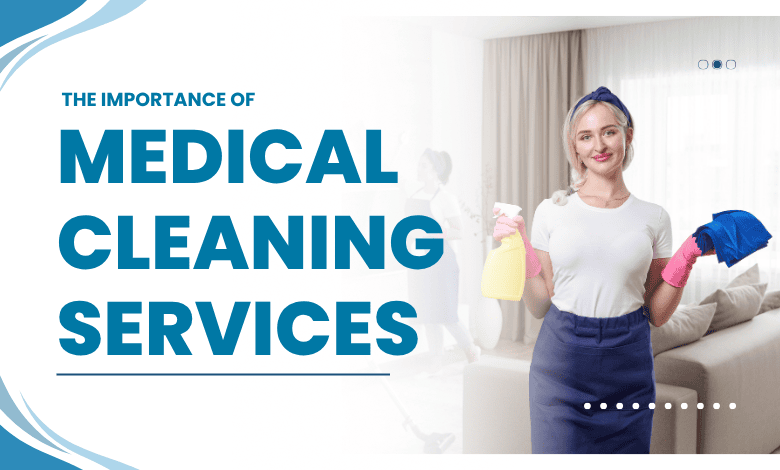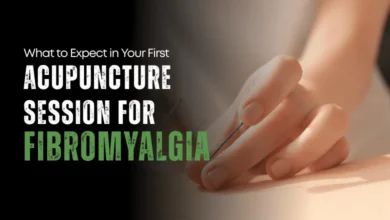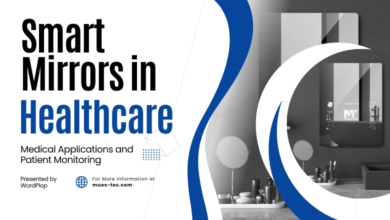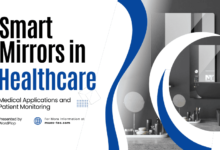
Understanding the Unique Challenges of Medical Facilities
Medical facilities, including hospitals, clinics, and long-term care facilities, face extraordinary challenges when it comes to maintaining cleanliness and hygiene. Unlike traditional environments, healthcare settings are frequented by individuals with compromised immune systems or those undergoing invasive procedures, making the need for rigorous cleaning protocols imperative. The presence of pathogens and the reality of healthcare-associated infections (HAIs) necessitate a thorough understanding of both cleaning techniques and the environments needing attention. Unlike typical cleaning environments, a medical facility must contend with a myriad array of contaminants, ranging from bacteria to potentially resistant viruses, which require specialized cleaning methods and products that go beyond conventional approaches.
Why Traditional Cleaning Methods Fall Short in Healthcare
Traditional cleaning methods often revolve around the basic practices of dusting, sweeping, mopping, and disinfecting surfaces. While these practices may suffice in residential or non-medical environments, they do not address the unique needs of healthcare settings. In healthcare, it’s not enough to merely clean surfaces; effective disinfection must be employed to combat microorganisms effectively. Standard cleaning agents may inadequately kill pathogens, especially in critical areas like surgical theaters and intensive care units where infection risk is elevated. Furthermore, cross-contamination can occur easily when cleaning tools are not properly managed, thus reinforcing the need for specialized techniques tailored explicitly for medical cleaning.
The Role of Specialized Training in Medical Cleaning
To effectively manage the unique challenges of medical cleaning, specialized training is crucial. Medical cleaning personnel need to understand the biology of pathogens and how they spread, the properties and safe usage of various disinfectants, and the protocols for cleaning specific areas and equipment. This level of specialization is critical because the staff must know how to use hospital-grade cleaners effectively, ensure appropriate contact time for disinfectants, and employ techniques that minimize the risk of contamination. Moreover, trained staff must remain vigilant to the latest updates in cleaning standards and regulatory requirements, making ongoing education a necessity in this rapidly evolving field.
Common Misconceptions About Medical Hygiene Standards
There are numerous misconceptions surrounding the standards of hygiene in medical facilities. For instance, some people believe that visible cleanliness is synonymous with safety; however, surfaces can appear cleansed while still harboring dangerous pathogens. Additionally, a belief exists that all cleaning products labeled as “antibacterial” are effective for medical settings, which is far from the truth. Cleaning products in medical environments must meet stringent regulatory standards, and their compositions need to target specific microorganisms effectively. Another misconception is that the presence of a cleaning crew guarantees a Harb-free environment; real safety hinges on the consistency and expertise of these teams rather than mere presence. Understanding these shortcomings can empower healthcare facilities to seek more effective methods and partners in their quest for safety and hygiene.
The Science Behind Effective Disinfection
At the core of maintaining a sterile environment lies the science of disinfection, which involves a precise understanding of chemicals, contact times, and application methods. Effective disinfection requires more than just cleaning; it demands a strategic approach backed by evidence-based practices designed to eradicate pathogenic presence.
How Hospital-Grade Cleaners Differ from Household Products
Hospital-grade cleaners are formulated specifically for the challenges presented in healthcare environments and are often far more potent than household cleaning agents. These products are designed to eliminate a wide spectrum of bacteria, viruses, and fungi, including those that are resistant to conventional treatments, such as MRSA or C. difficile. Often, they contain stronger active ingredients that can kill microorganisms as per the standards set by regulatory bodies. It is not merely enough to apply a cleaner; understanding the chemical properties, concentration levels, and specific applications are essentials that can distinguish hospital-grade products from regular household cleaners. This knowledge underlines the importance of sourcing proper disinfection agents and protocols rather than relying on consumer-grade solutions.
The Importance of Contact Time and Surface Coverage
One critical yet often overlooked aspect of effective disinfection is the concept of “contact time.” This term refers to the duration that a disinfectant must remain wet on a surface to effectively neutralize pathogens. Each cleaning product comes with a recommended contact time that must be adhered to for optimal results. Wiping a surface down quickly may leave harmful germs untouched because they weren’t exposed to the active ingredients long enough to be eradicated. Additionally, surface coverage is vital; if a surface is not sufficiently saturated with a disinfectant, some areas may escape thorough decontamination. For effective disinfection, staff must be educated on applying products correctly, making sure they cover every corner of the surfaces being treated, leaving no area unprotected.
Emerging Technologies in Medical Cleaning Solutions
The cleaning industry continually evolves with new technologies aimed at enhancing the effectiveness of medical cleaning solutions. Innovations such as electrostatic sprayers, UV-C disinfection, and nanotechnology show immense potential in improving cleaning protocols. Electrostatic sprayers allow for an even distribution of cleaning solutions on surfaces, ensuring adequate coverage while minimizing chemical usage. UV-C disinfection systems utilize ultraviolet light to kill pathogens without chemicals. As we advance in our understanding of microbial resistance and infection control, these emerging technologies may not only reduce the burden of HAIs but also streamline cleaning processes, ushering in new standards for healthcare sanitation.
Establishing a Clean Culture: Best Practices for Staff and Patients
Creating a culture of cleanliness within medical facilities is a collaborative effort that involves staff, patients, and visitors. Establishing best practices is essential not only for compliance with health regulations but also for ensuring optimal patient outcomes and minimizing infection rates.
Integrating Cleaning Protocols into Daily Operations
Integrating cleaning protocols into the daily operations of a healthcare facility is crucial for standardizing cleaning practices and maintaining a sanitizing routine. This integration should involve structured schedules for cleaning various areas, including high-touch surfaces, patient rooms, surgical theaters, and communal areas such as waiting rooms. Team training sessions focusing on the importance of hygiene and cleanliness, the proper use of cleaning products, and adherence to best practices play a significant role in establishing a culture of cleanliness. Additionally, staff members should be encouraged to communicate openly about potential breaches in hygiene standards or to suggest improvements in the cleaning protocols. By embedding these practices within the culture of the facility, a proactive rather than reactive approach to healthcare hygiene becomes the norm.
Empowering Patients: Awareness and Involvement in Hygiene
Engaging patients in their own healthcare journey includes educating them about the significance of hygiene and sanitation. Awareness campaigns, informative brochures, or even interactive workshops can heighten patients’ understanding of infection risks and their roles in promoting a clean environment. Encouraging patients to engage in handwashing, maintaining personal cleanliness, or properly using tissues can empower them to take responsibility for their health, creating a more hygienic environment for all. This dual approach not only fosters a partnership between medical staff and patients but also reinforces the importance of a collective commitment to safety and infection control in healthcare settings.
Creating a Mental Model: The Psychological Benefits of a Clean Environment
The impact of a clean environment extends beyond physical health, influencing psychological well-being as well. Studies have shown that clean and organized surroundings can reduce stress, promote healing, and enhance the overall patient experience. A clinical setting perceived as hygienic can instill confidence in patients, alleviating anxiety associated with their medical conditions or treatments. Furthermore, healthcare professionals working in a clean environment are likely to experience higher job satisfaction and better morale. The creation of a clean culture within medical facilities can, therefore, considerably enhance both patient care and staff performance by fostering a sense of security and commitment among all parties involved.
Regulatory Compliance and Its Impact on Infection Control
Adhering to regulatory compliance in healthcare facilities is paramount in ensuring infection control and maintaining high hygiene standards. Regulatory bodies have established rigorous guidelines that govern sanitation practices, equipment cleanliness, and overall healthcare facility safety.
Navigating the Complexities of Healthcare Regulations
Navigating the intricate landscape of healthcare regulations can be a daunting task for medical facilities. Compliance is required not only for maintaining licenses but also for protecting patient safety and enhancing overall care quality. Organizations like the Centers for Disease Control and Prevention (CDC) and the Occupational Safety and Health Administration (OSHA) provide frameworks and guidelines that facilities must follow. Staff training on these regulations, regular audits, and involvement in external evaluations can help ensure that a facility consistently meets standards. Understanding the complexities of these regulations empowers healthcare providers to create a safer environment for patients and enhances public health outcomes.
How Medical Cleaning Services Aid in Achieving Accreditation
Accreditation is vital for healthcare facilities, as it signifies adherence to established standards in care and operations, including cleaning and hygiene practices. Medical cleaning services play a critical role in this quest for accreditation by ensuring that facilities not only meet but exceed the standards laid out by authorities. Professional medical cleaning services understand the regulatory landscape and can provide best practices that align with accreditation requirements. Regular inspections, compliance assessments, and updates on cleaning protocols are integral components of their offerings. By collaborating with these services, healthcare facilities can fortify their efforts in achieving and retaining accreditation, ultimately improving patient safety and care.
The Future of Healthcare Regulations and Cleaning Standards
The landscape of healthcare regulations is dynamic, with ongoing studies continually reshaping standards to meet evolving challenges. As we turn our attention to the future, it is apparent that infection control and cleanliness will remain at the forefront of healthcare priorities. The rise of multi-drug-resistant organisms and novel pathogens necessitates the development of more robust cleaning standards and protocols. Innovations in cleaning technology, along with increasing transparency in cleaning practices, are expected to drive future regulations. Facilities that prepare for these changes by investing in training, technology, and partnerships with cleaning specialists will not only comply with regulations but also lead in setting new benchmarks for safety and hygiene in healthcare.
Find more thought‑provoking content to fuel your knowledge and motivation.






